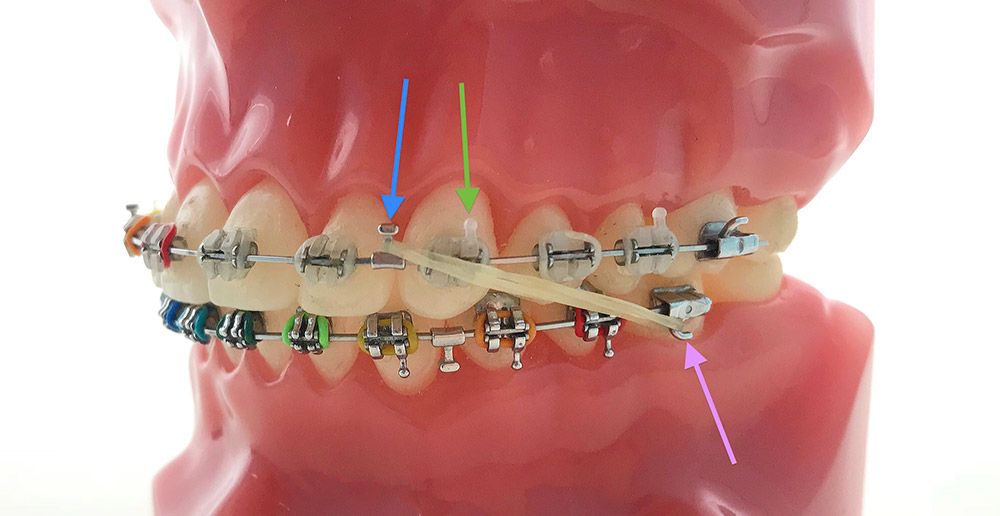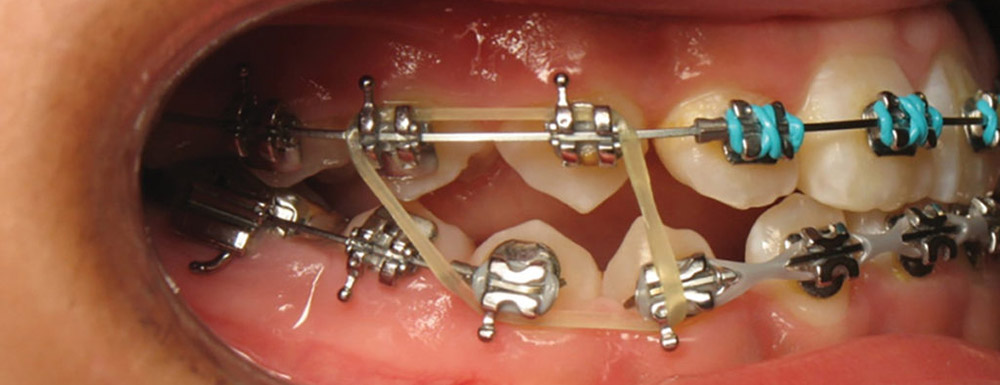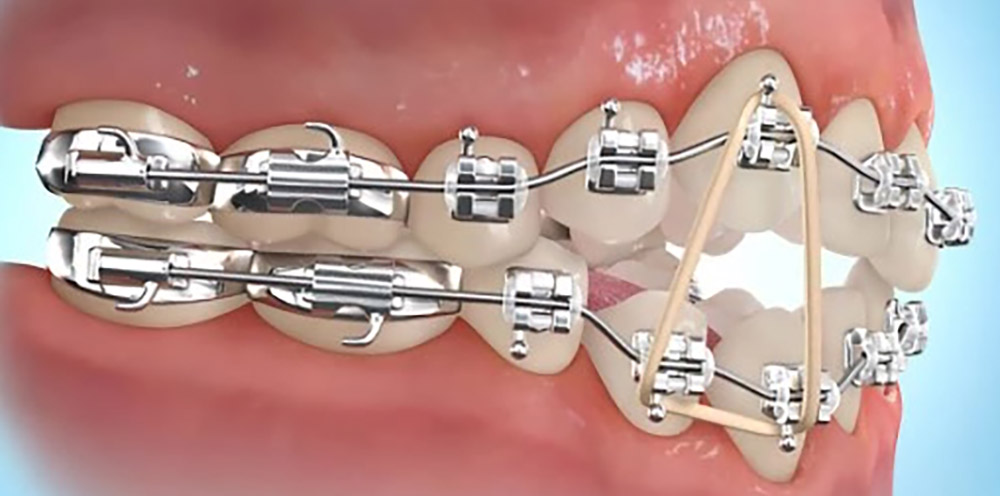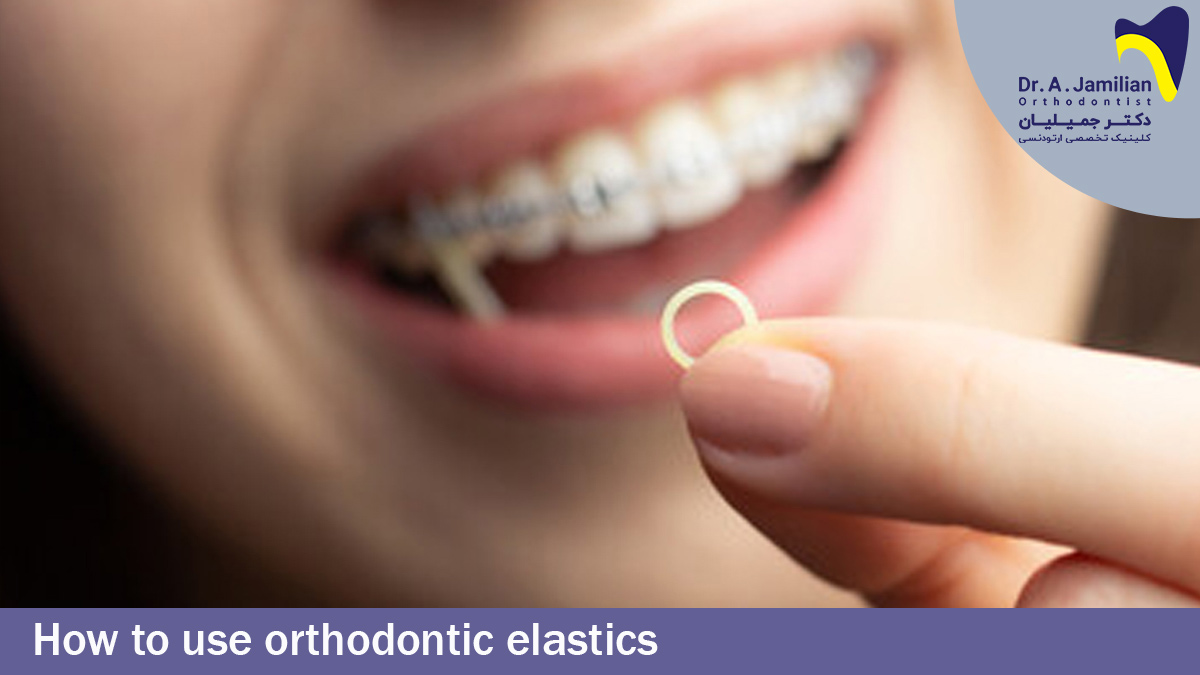Orthodontics braces or elastics are among the very simple tools and equipment used to help move and modify teeth. In multiple dental and jaw malocclusions such as underbite and overbite, using fixed orthodontic appliances cannot solve a patient’s problem. In such cases, an orthodontist prescribes orthodontic elastics or braces.
Orthodontic braces can be employed to facilitate the improvement process and exert more pressure and force on teeth. This is used for faster placement in the case of sever dental malocclusions.
Selecting The Right Orthodontic Elastics
Patient’s should consult with their orthodontist to determine the right thickness and placement of orthodontic braces. It should be noted that the slightest changes in the orthodontic braces can affect the final results of a patient’s orthodontic treatment.

Stages Of Using Orthodontic Elastics
There must be hooked brackets installed on your teeth to place the orthodontic braces. Your orthodontist decides what braces to select, how to place them on your teeth, and what braces to put on what teeth based on the type and severity of your malocclusions.
It is not difficult to close the orthodontic braces on the teeth, and patients can do it easily with just a bit of practice. After your orthodontist determines the type of braces and the right spots for their placement, patient’s then may learn to close and open them by themselves.
Commonly, orthodontic braces / elastics may be closed in the following ways depending on type of your dental and jaw malocclusions:
1-Class-1 Orthodontic Elastics
In this case, braces are connected from the hooks placed on the teeth of one jaw to other teeth of the same jaw. This method is employed to increase elasticity and movement of teeth in addition to filling the gap between teeth.
2-Class-2 Orthodontic Elastics
In this case, orthodontic braces are connected to an upper canine and a lower molar to move the teeth of the upper jaw backward and move the teeth of the lower jaw forward.

3-Class-3 Orthodontic Elastics
Within Class-3 orthodontic braces are connected from an upper molar to a lower canine. The elastics of this class are connected in an inverse direction as opposed to the elastics of the second class in order to move the upper teeth forward and, move the lower teeth backward.
Elastics may be used in different methods based on the type of malocclusions, treatment plan, and the orthodontist’s knowledge and experience. One of the popular methods within Class-3 are below:
Triangular brace: In this case, an orthodontic brace is first connected to an upper canine, then to a premolar, and finally, to a molar to create a triangle. This type of brace may also be placed on other teeth to form a triangle.
4-Rectangular or Four-Cornered Orthodontic Elastics
“The Four-Cornered Orthodontic Elastics” two lower teeth are joined to two upper teeth so that they can be placed on each other by exerting pressure appropriately.

5-V-Shaped Orthodontic Elastics
Three teeth are used to form a V-shaped orthodontic brace. For this purpose, one lower tooth is connected to two upper teeth to join both rows of teeth and place them on each other.

6-Criss-Cross Elastics
As suggested by its name, this method is used to correct the cross bite teeth. For this purpose, an orthodontic brace is connected from the inner part of an upper tooth to the outer part of a lower tooth hook. It can also be connected from the outer part of an upper tooth to the inner part of a lower tooth hook.
How To Use Orthodontic Elastics FAQ
1-How Long Should The Orthodontic Braces Be Used?
An orthodontic brace is often placed on teeth permanently for 24 hours. The patient should only remove braces from their teeth for cleaning your teeth, eating food, or changing braces.
2-What Effect Does Changing The Thickness Of Braces Have On The Orthodontic Treatment?
A section of orthodontics is elastics, they benefit the patient by helping keep the form of their teeth in place. Elastics have various types differing in thickness. These are mainly made from latex as it increases pressure. The thicker the elastic, the higher the elasticity and the moving force. It should be noted that a specific type of elastics with a specific thickness will be prescribed for you based on your malocclusion at the discretion of your orthodontist.
3-How Often Should An Orthodontic Brace Be Changed?
Elastics should be changed once a day because they lose elasticity over time (however, they may vary from different malocclusions & their orthodontic plan). However, as it benefits patients immensely, it’s important to learn ;how to open and close orthodontic elastics based on the type of malocclusion.
4-What Is The Next Stage After The Orthodontic Elastic?
Your orthodontist determines how long the orthodontic elastic should be used. After the period is over, you might still need to have fixed orthodontic appliances on your teeth. At the end of the orthodontic treatment, the use of an orthodontic retainer is prescribed.
5-Does The Use Of An Orthodontic Elastic Cause Any Pain?
The use of an orthodontic elastic is not painful. Patients may feel unpleasant during the early days when orthodontic elastics are used. After a while, patients will be accustomed to using orthodontic elastics.
6-How Long Should The Orthodontic Elastics Be Used?
The duration varies in the severity of malocclusions. Given the conditions of teeth, an orthodontist may even change the directions of elastics and prescribe a different type of orthodontic braces for another period of time.






